
No summer is complete without the sweet crunch of a cucumber. Whether they’re in salads or pickled for an easy snack, you can’t go wrong with these scrumptious veggies. They’re even better when grown at home – fresher, crunchier, and juicer.
Cucumbers are easy plants to grow and often don’t require much fuss to thrive in your vegetable patch (as long as you follow these 8 tips). With that said, these easy-breezy summer staples aren’t always problem-free.
Pests seem to love cucumber plants as much as we do – but their eating habits can have dire consequences.
Luckily, there are several ways to get rid of these bad bugs and even more ways to prevent them from getting too cozy in your plants.
1. Aphids
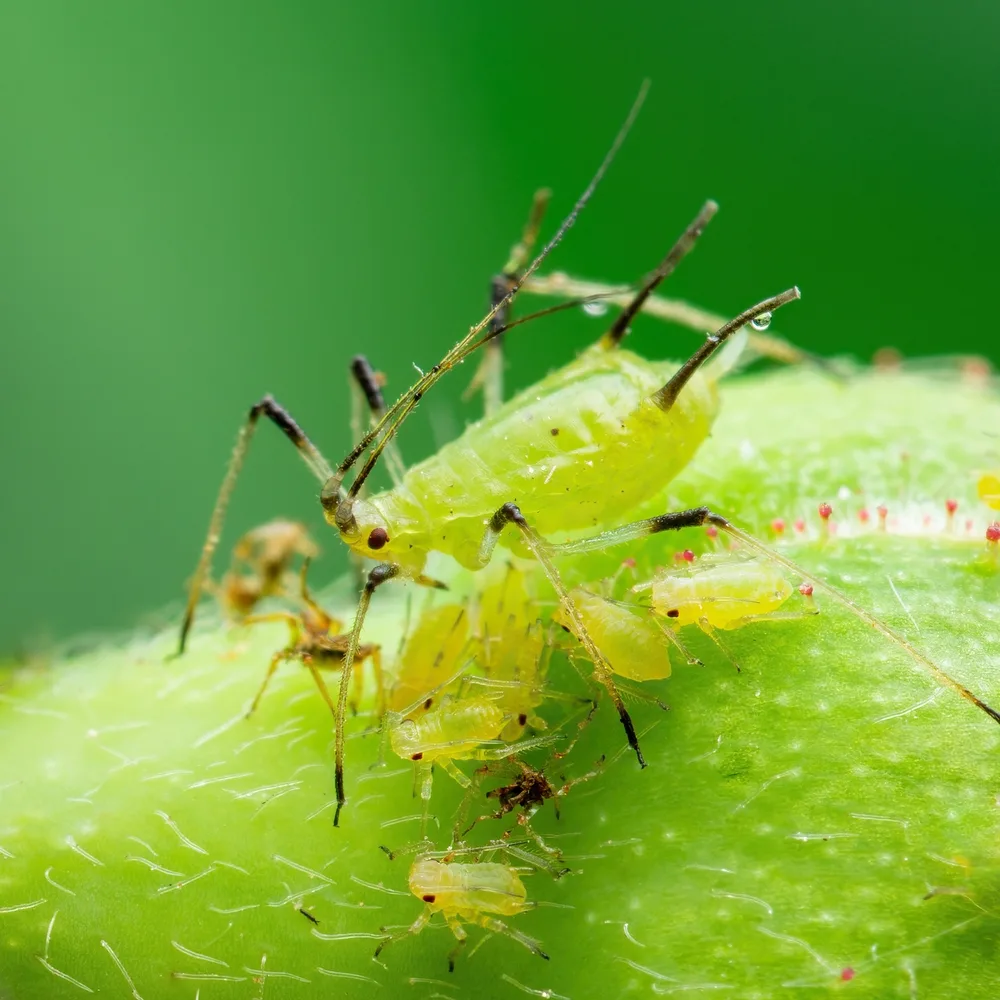
Aphids, otherwise known as the bane of all gardeners. This pesky little bug adores almost all plants, including cucumbers, making them a true menace to any kind of gardener.
Related Reading: 5 Early Warning Signs Of Aphids & How To Get Rid Of Them
Aphids are soft-bodied pests that can usually be spotted on the undersides of leaves, sucking on sap. They also excrete a sticky, honeydew-like substance that attracts other pests and can often lead to the growth of other diseases like powdery mildew.
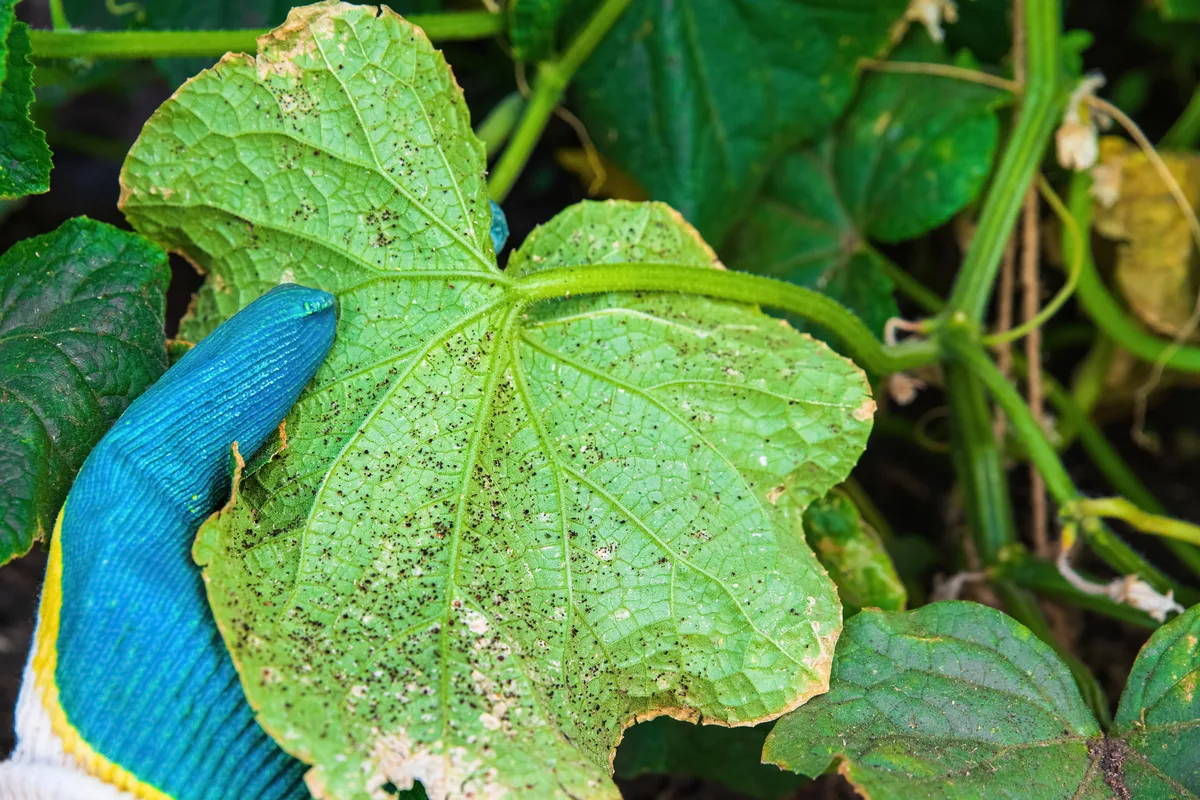
Aphids’ eating habits tend to weaken plants, eventually leading to the yellowing of leaves. If left untreated, these leaves will die off.
Defoliation typically results in stunted growth and reduced yields. The cucumbers that might develop also stand a chance of being small or deformed.
Unfortunately, aphid damage doesn’t stop there.
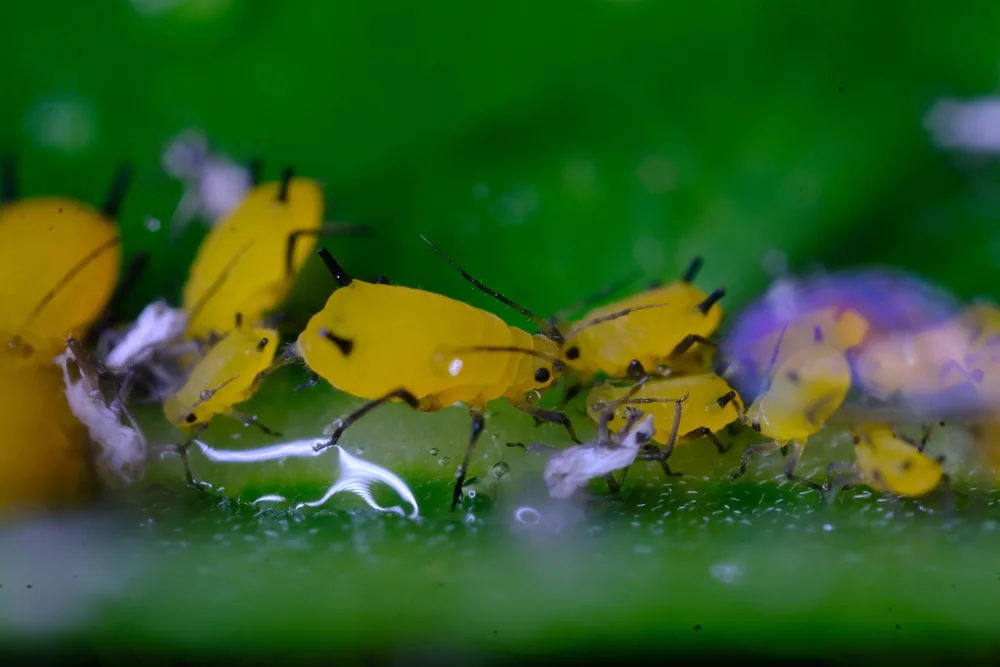
These pesky pests also carry and spread several deadly diseases, such as the cucumber mosaic virus.
In the early stages, small infestations are easy to manage. You can simply pinch them off the undersides of leaves or zap them off with a spray water bottle. You can also wipe groups of aphids off your cucumber plant leaves and into a bucket or jar of soapy water.
For a completely natural method, you can introduce some aphid predators, like ladybugs into your garden. Predators are often available at garden nurseries, but they can be lured naturally by planting their favorite plants.
Horticultural oils, like neem oil, are also great natural pesticides, but they can deter beneficial insects from settling into your space.
2. Cucumber Beetles
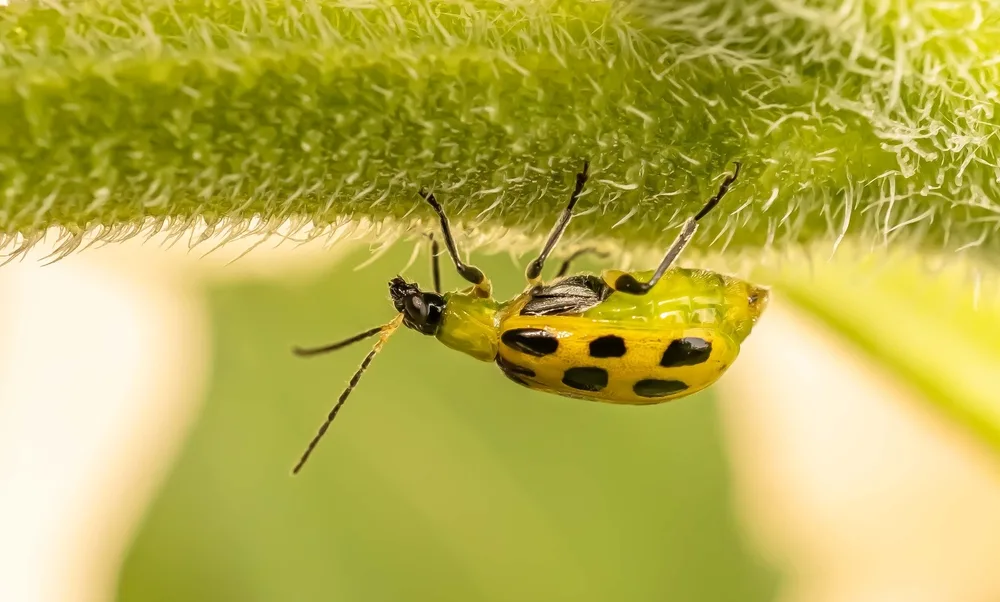
Cucumber beetles may be the most common pest, other than aphids, that plagues cucumber plants.
Depending on your area, you may face one of the two types of cucumber beetles – the striped cucumber beetle or the spotted cucumber beetle. Both are extremely harmful to cucumbers and can be quite the challenge to get rid of.
Cucumber beetles feast on the foliage of cucumber plants, leaving holes across leaves and flowers. In extreme cases, these yellow beetles begin to nibble on the plant stems and, eventually, the vegetables we love.
Striped cucumber beetles lay their eggs at the base of cucumber plants, and when they hatch, the larvae subsequently feed on the roots.
Cucumber beetles are notoriously hungry, and if left to munch away, defoliation will occur. The lack of leaves ultimately weakens the plant, and when flowers are destroyed, no fruit can set.
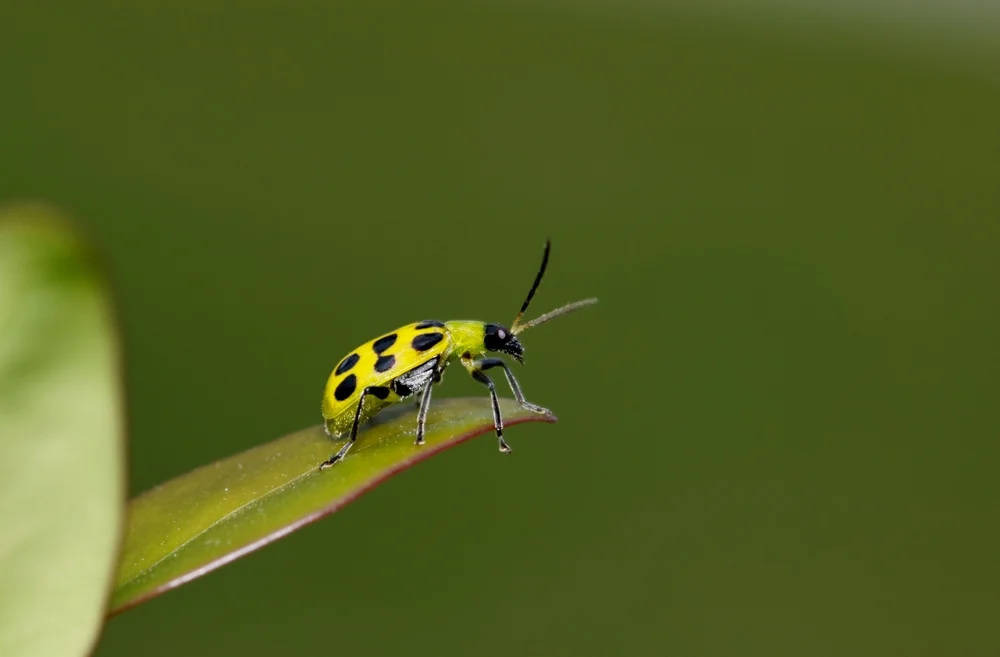
The excessive damage will eventually kill your cucumber plant.
Sometimes, these killer pests take it one step further. Like aphids, they carry several diseases that can kill cucumber plants, including bacterial wilt.
Unfortunately, they’re tricky to manage. Cucumber beetles aren’t easy to catch and pinch as they fly off. But you can place sticky straps around the base of your cucumber plants.
Alternatively, you can gently shake your plants to knock these pests onto something sticky or into a bucket of soapy water.
You can also use a small handheld vacuum to suck these pests off your plants, but be extra careful not to do any damage yourself.
Row covers are a wonderful way to keep cucumber beetles, and many other pests, from ever settling on your crops too.
3. Root-Knot Nematodes
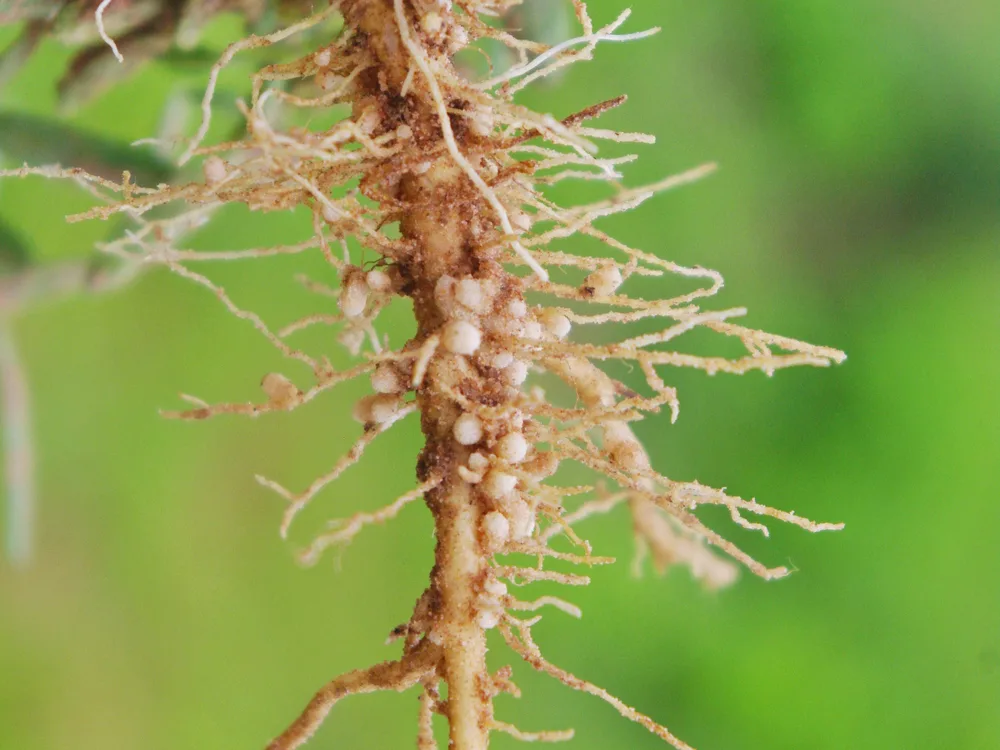
Nematodes are microscopic pests that live in the soil. There are a few predatory nematodes that feed on other bad bugs, stopping devastation in its tracks. However, there are a handful of species that add to the devastation themselves.
Cucumbers, and other cucurbits, are susceptible to root-knot nematodes. These bad nematodes attack plant roots, leading to several devastating problems.
While nematodes typically attack the roots of the plant, there are a few signs of a nematode infestation above the ground. You may notice yellowing leaves, premature wilting, and stunted growth.
These common symptoms could mean a number of things, of course. The true tell-tale sign of a nematode problem is in the roots. Roots usually swell and develop nodes or knob-like growths.
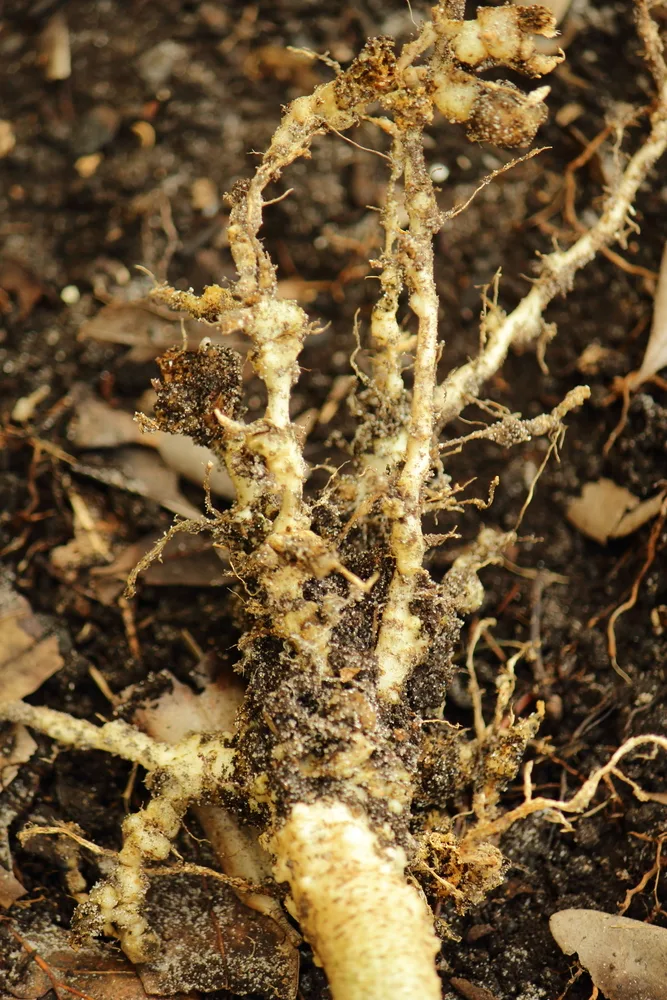
Unfortunately, nematodes are not easy to control and manage.
Because they’re microscopic and live in the soil, it’s difficult to eliminate them.
One of the best ways to mitigate the problem is to practice crop rotation. If you have a nematode problem in one section of the garden, avoid planting your cucumbers there next season. You should also till soil between crops, as this prevents nematodes from taking root.
Good garden hygiene practices, like cleaning tools and boots between plants, will also prevent nematode-infested soil from transferring to other plants.
4. Thrips
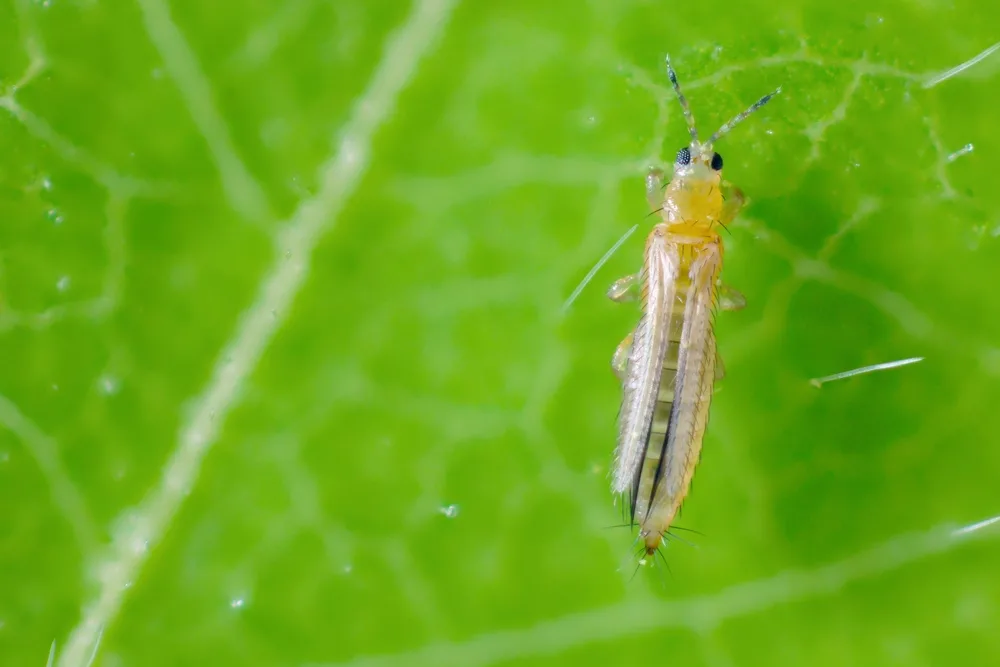
Another almost minuscule cucumber-loving pest is the thrip. These tiny pests can’t be seen with the naked eye, but the damage they cause can be. Thrips may be small, but once they nestle into your plants, there can be devastating consequences.
These tiny, fly-like bugs penetrate the cells of cucumber plants and munch away, often resulting in deformed foliage and wilting leaves.
Even worse, thrips cause striking silver streaks and patches on leaves, making it difficult for them to photosynthesis.
If left unattended, a thrip infestation can quickly kill your cucumber plants.
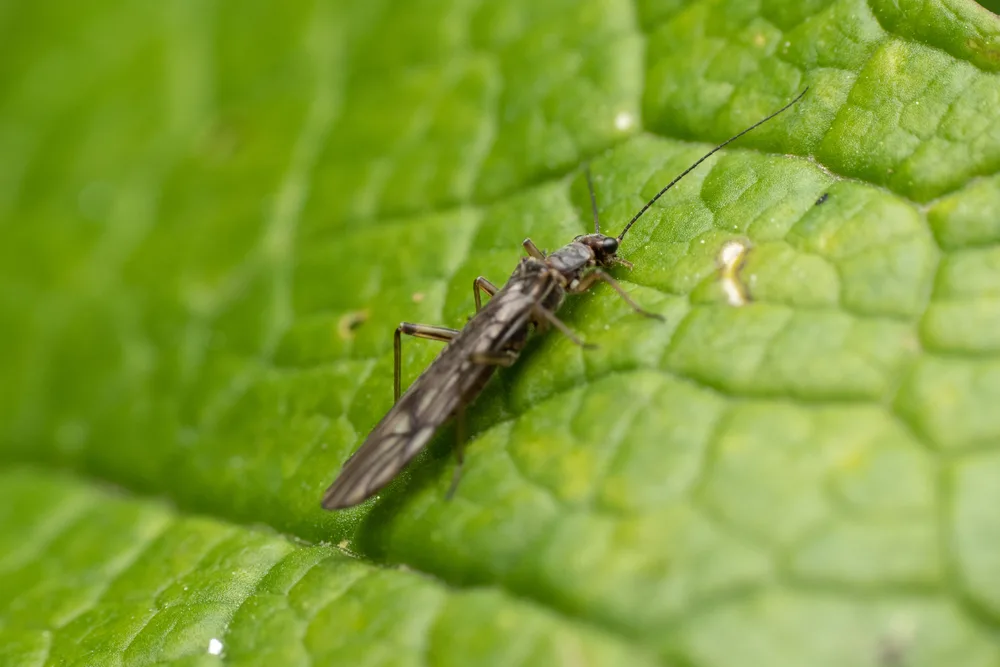
Thrip management isn’t too difficult. Prune and destroy any infected foliage and practice good garden hygiene.
Unfortunately, an extremely bad thrip infestation calls for the use of insecticides. Luckily, neem oil and several other horticultural oils are just as effective and completely natural.
Keeping thrips off your cucumbers is just as easy. Thrips are attracted to several weeds, plant debris, and water-stressed plants. So, if your garden is clean and your cucumbers are well watered and cared for, thrips are less likely to settle in and destroy them.
5. Squash Bugs
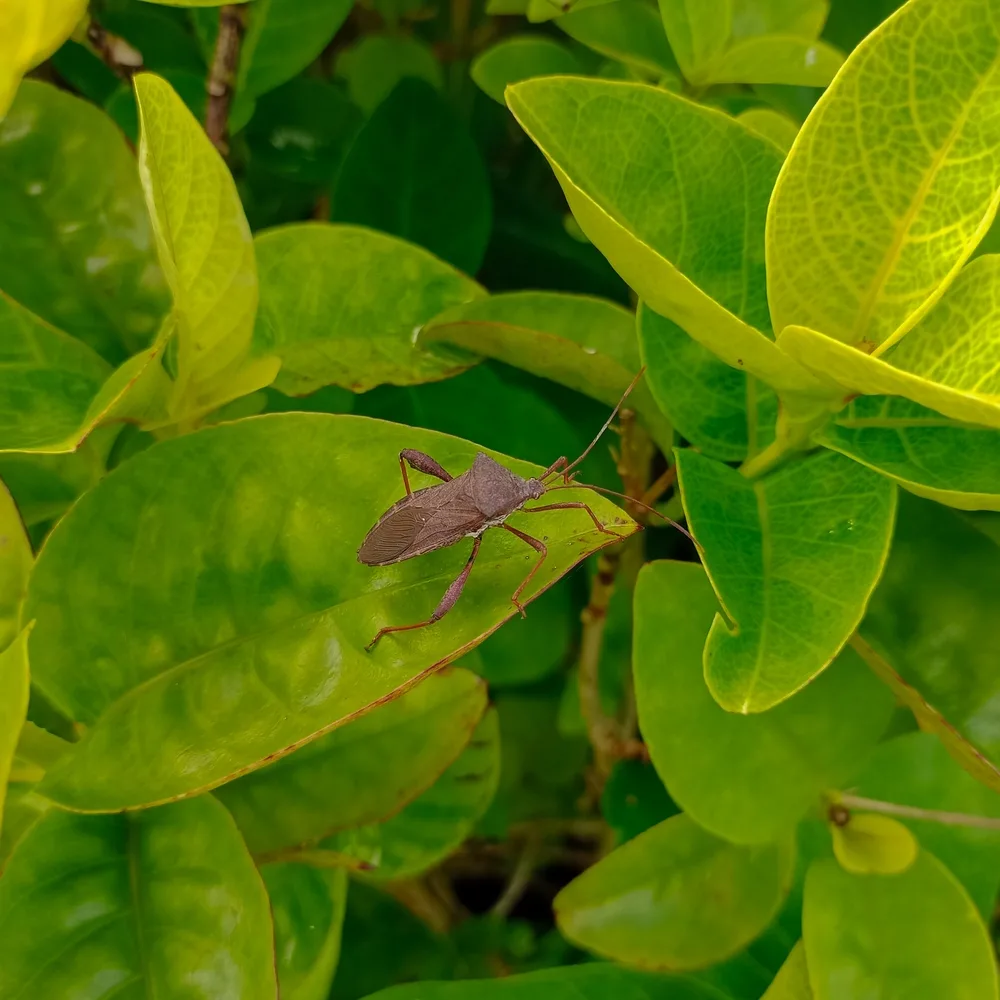
A common pest that rivals aphids are squash bugs.
These pests also seem to love almost all vegetables and unfortunately, cucumbers aren’t spared. Squash bugs can be extremely damaging, and because they favor so many types of vegetables, can quickly spread, leaving nothing but devastation in their wake.
Squash bugs suck on the sap of the leaves they settle on, weakening foliage as they do. They also inject a toxin into the leaves which causes them to yellow and weaken even further. Eventually, the cucumber plant begins to wilt, and if left, will die.
As with most pest infestations, cucumber yields are severely impacted.
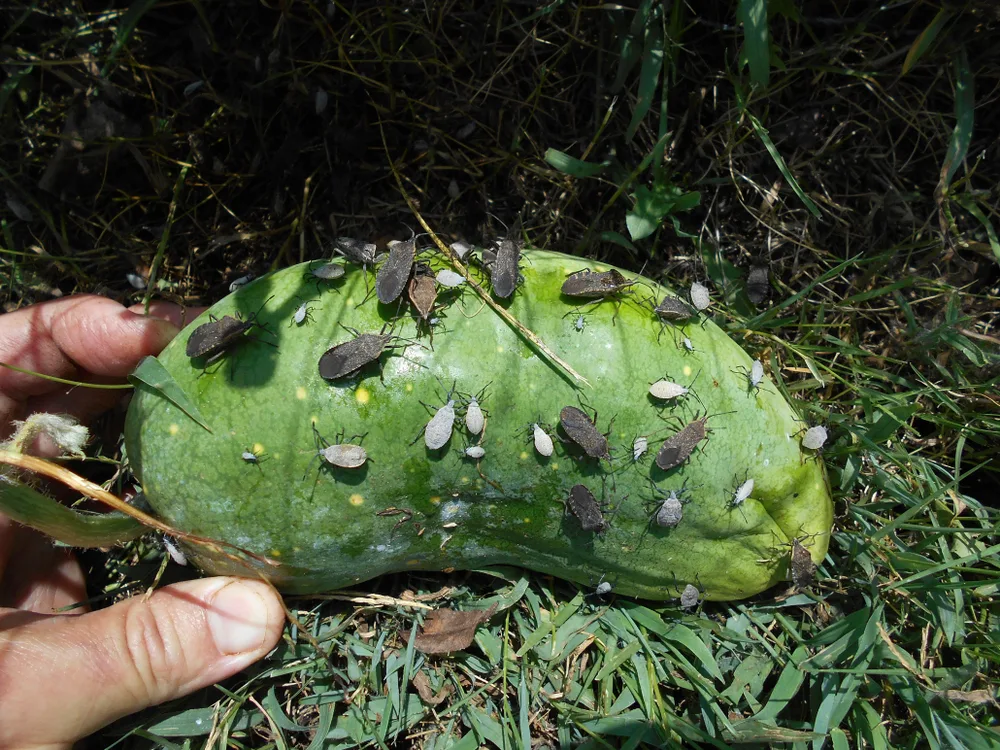
Squash bugs tend to cluster on the lower parts of the plant and are typically found near the crown. The biggest concern with these pests is their ability to overwinter in old plant debris, making it easier for them to return each season.
If you spot these pests on your cucumber plants, pick them off and squish them between your fingers.
Most aphid control methods help rid your cucumber plants of these pesky grey bugs. And, as with most cases, good garden hygiene and the correct care stop your cucumber plants from looking even more appealing to squash bugs.
6. Whiteflies
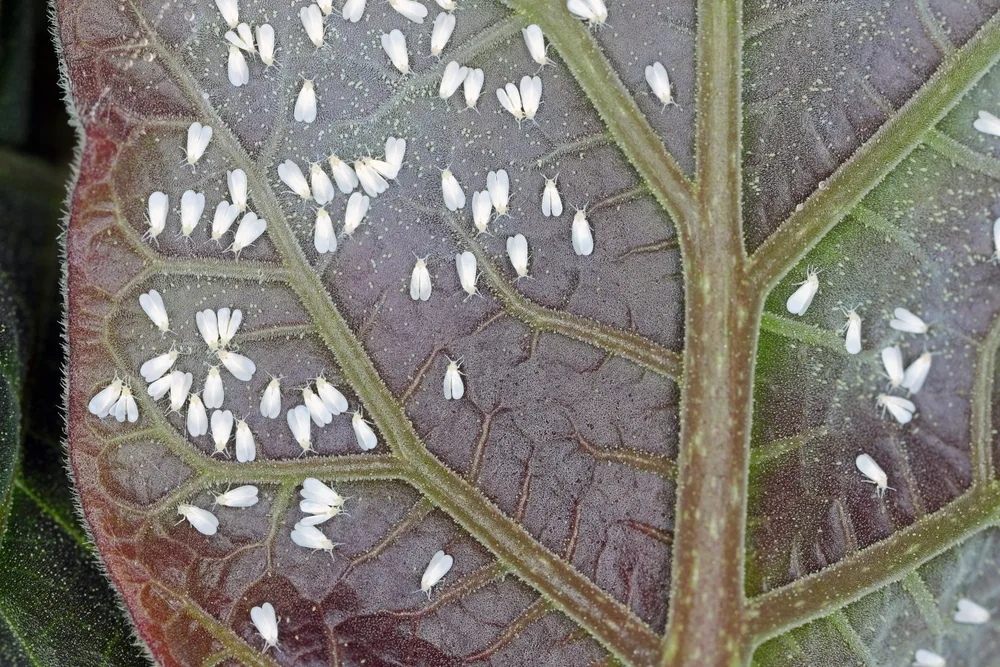
Whiteflies are another common little pest that plagues several different plants.
Like aphids, whiteflies can be found on the undersides of leaves, sucking up sap. They also excrete a honeydew substance that attracts pests and causes the development of several diseases.
Sooty mold is a common side effect of a whitefly infestation, and it can result in the death of your cucumber plant. Even worse, like so many other pests, whiteflies carry several devastating diseases.
In general, a whitefly infestation results in weakened cucumber plants, the growth of sooty mold, which only further weakens the plant, stunted growth, and reduced yields.
These little silvery flies can wreak havoc on your garden, but luckily, they’re easy to control.
They tend to cluster on the undersides of leaves, making them easier to spot. They do tend to fly off, however, making catching and pinching them challenging.
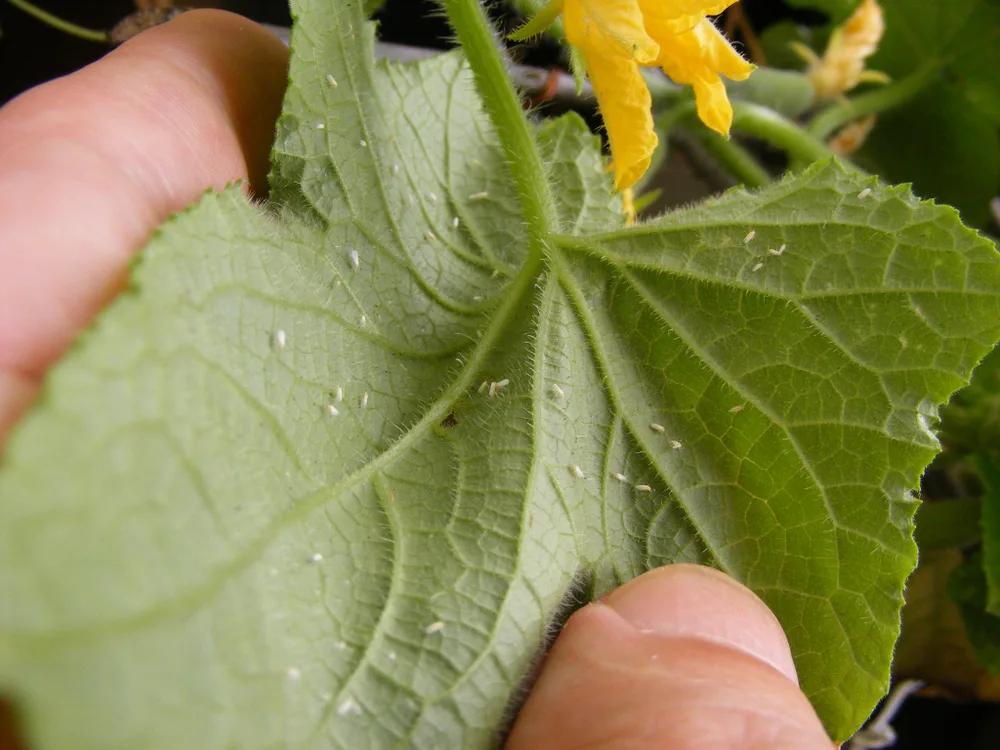
Neem oil and other horticultural sprays are a great way to kill these little pets. Arm yourself with your trusty spray bottle filled with a neem oil mixture and you should be good to go.
Another natural form of control is the introduction of ladybugs and other predatory insects. You can introduce them naturally by planting their favorite plants, like marigolds, or you can purchase them from your local nursery.
You can also keep whiteflies off your cucumber crops completely by adding row covers to your space. Additionally, you can add a thin layer of reflective mulch around the base of your plants.
7. Two-Spotted Spider Mites
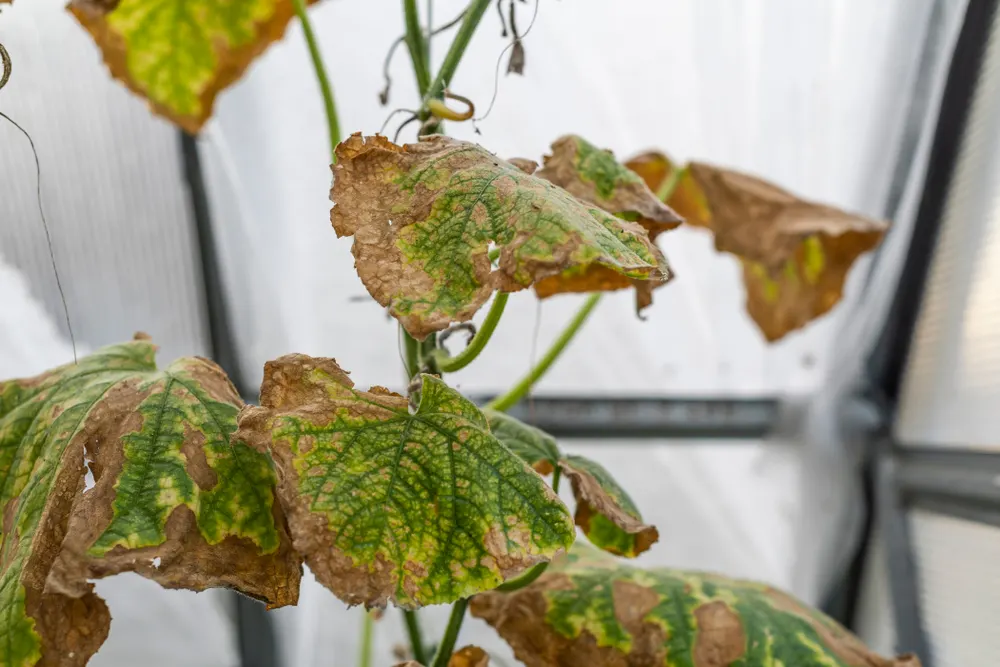
Cucumbers and other members of the cucurbit family are the favorite food of the two-spotted spider mite. They might be tiny, but they quickly cause a multitude of problems. These little pests do the best (or worst, depending on perspective) during hot, dry weather.
You’ll usually find two-spotted spider mites on the underside of leaves where they munch away. They feed on the individual plant cells within leaves, resulting in the development of strange yellow and red spots.
These spots come in different sizes and initially appear on the upper sides of the leaves. As the mites munch away, more spots appear, eventually taking over the leaves. This ultimately stunts growth and can lead to defoliation.
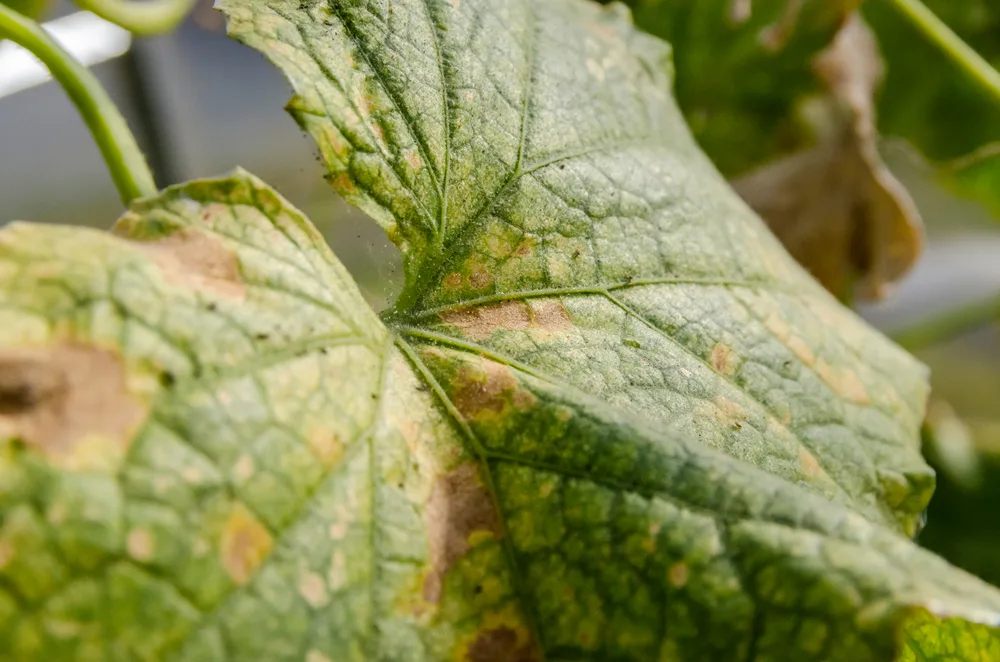
Once these tiny mites have settled onto your cucumber plants, they can quickly kill it off. However, their smallness makes them difficult to detect, and once you’ve noticed the damage, it might be too late.
Don’t let the sight of strange yellow or red specks worry you too much.
Any sign of spider mite infestation is a good reason to prune. Cut away and destroy any infected leaves.
These pests also love dry, dusty conditions and often prefer drought-stressed plants. A good watering routine will keep them from settling on your cucumbers. If you manage to spot these little pests, you can gently wipe them off your leaves with a damp cloth.
Two-spotted spider mites also have several natural predators that’ll keep them at bay. The most common is a predatory mite called Phytoseiulus persimilis.
A well-watered, clean cucumber bed is the best way to keep these little pests off these delicious summer veggies.
8. Cabbage Loopers
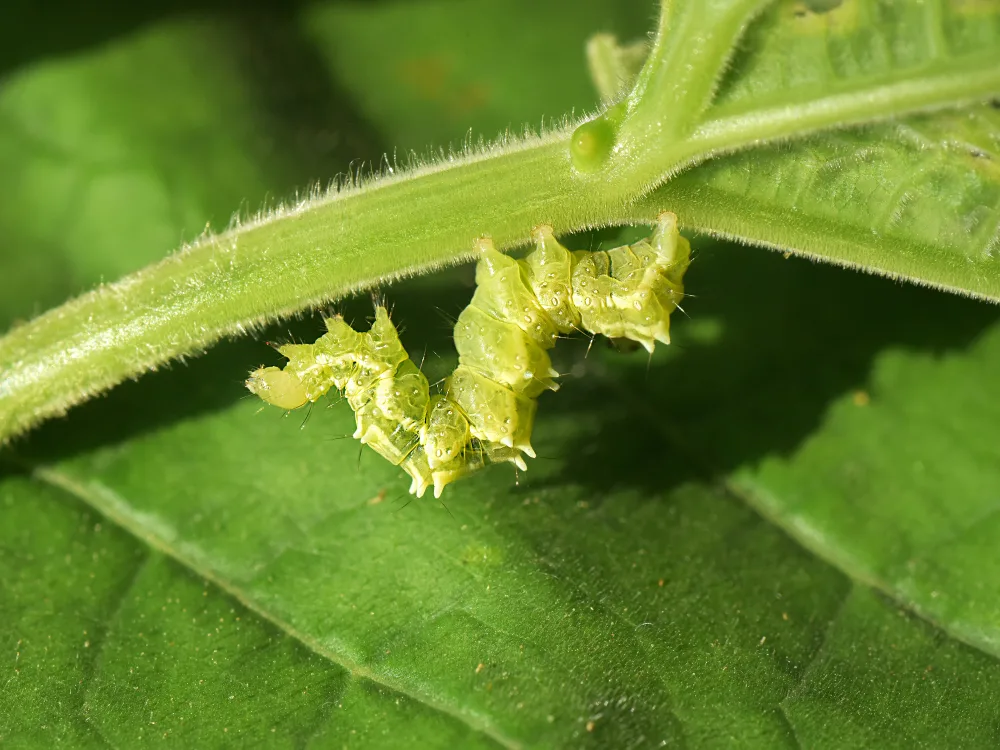
While the name suggests that these pests thrive on cabbages, they sometimes wander onto cucumber plants. These small green caterpillars may seem harmless, but they can quickly destroy entire crops.
They get their unique name from how they loop their bodies to move across plant foliage. As they travel across your plants, they nibble away at leaves, leaving devastation behind.
Large, unattended looper infestations can quickly lead to mass defoliation. This results in reduced cucumber yields and a severely weakened plant.
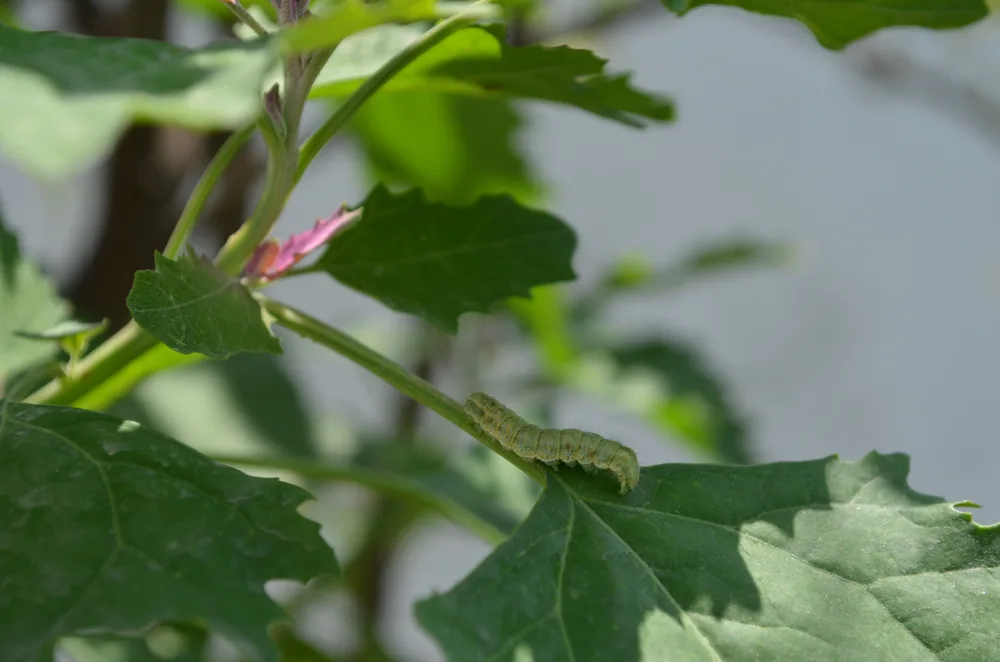
Cabbage loopers are not too difficult to control, especially if you catch them early. Pick off any adult loopers, larvae, and eggs off your plants as soon as you spot them and prune away any destroyed leaves.
One of the best ways to get rid of cabbage loopers is by introducing beneficial insects into your garden.
Cabbage loopers’ worst enemies are parasitic wasps. These are readily available at the most garden centres, but you can attract them naturally by planting yarrow and other pretty flowers. They’re also attracted to herbs like thyme and dill.
9. Cutworms
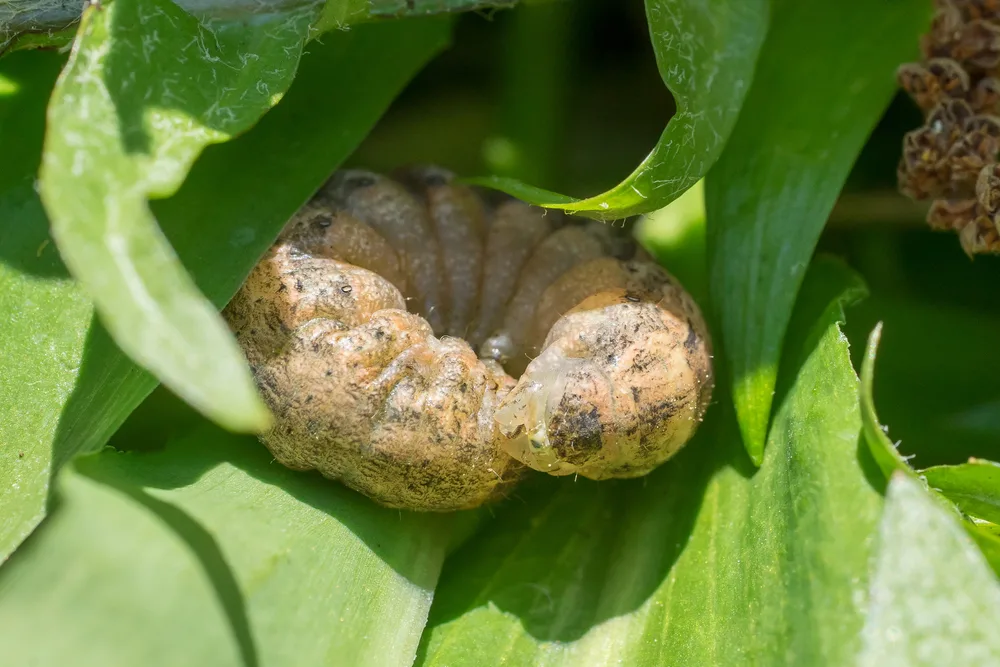
Cutworms are another caterpillar-type pests that plague cucumber gardeners. These little grey caterpillars are the larvae of night-flying moths. Once they’ve matured, these moths fly off and never harm another crop again.
Unfortunately, while cutworms are still worms, they can kill off your cucumber plants.
The major concern with cutworms is their speed.
They can tear through entire plants overnight.
Cutworms love cucumbers and will typically munch on the fruits, but they also love attacking young cucumber seedlings. These speedsters also enjoy snacking on cucumber plant stems, which weakens the plant.
Cutworms work at night, making catching them before significant harm is done difficult. However, controlling these pests isn’t impossible.
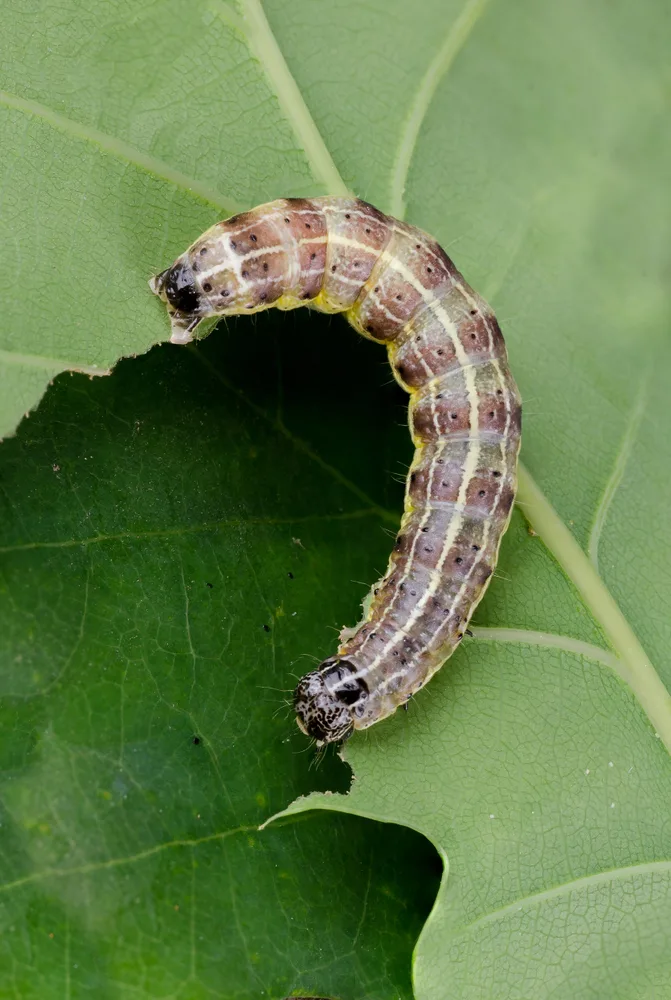
Arm yourself with a trusty torch and go cutworm hunting at night. Simply pick them off your cucumbers and toss them into soapy water. If you spot cutworm eggs, crush them before they hatch.
Horticultural oils also do a great job at killing off these little worms. For the best results, apply the oils at night, before the cutworms begin munching on your plants.
There are a few great ways to keep cutworms off your cucumbers too.
Easily protect young seedlings from the hungry mouths of cutworms by placing homemade cardboard collars around them. Make sure your barrier is big enough to be planted deep within the soil to stop the worms from burrowing.
Plant debris around the base of your cucumber plants is a breeding ground for cutworms (and other pests and diseases), so it’s always best to remove it. Other goof garden hygiene practices that help prevent cutworms include crop rotation and tilling your garden soil.
No home vegetable patch is complete without cucumbers. While these tasty, juicy vegetables are easy to grow and are beloved by many, pests love them too.
Companion planting, the introduction of beneficial insects, and the practice of good garden hygiene will help keep these pests at bay. Row covers are also great additions to your vegetable patch – they keep pests off your plants and have several other benefits.
With these tips and tricks, your cucumber plants will be protected from any pesky pests, allowing you to have a delicious, cucumber-filled summer.
Read Next: 12 DIY Cucumber Trellis & Support Ideas

Get the famous Rural Sprout newsletter delivered to your inbox.
Including Sunday ramblings from our editor, Tracey, as well as “What’s Up Wednesday” our roundup of what’s in season and new article updates and alerts.

